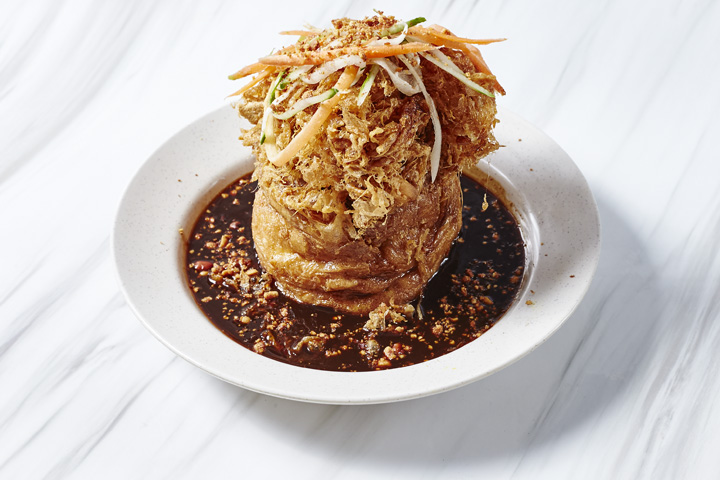In Indonesia, the entire eatery's offerings will be stacked on your table in small portions while in Singapore, you can order off a menu if it's a more formal restaurant or queue up and tell the staff what you'd like to order.
The tourist might feel a little overwhelmed at the sheer number of dishes available, but fret not, for we have the classics covered here.
It looks innocuous, being just beef in a nondescript brown gravy but once you’ve had a taste, you’ll realise why this dish is ubiquitous across the region. It’s a slow cooked dish of robust flavours where ingredients like garlic, ginger, galangal and lemongrass are ground into a rempah (spice paste) and then braised in coconut milk until the gravy is somewhat dry and the beef is fork-tender. Some food historians believe that the dish originates from the Minangkabau region of Indonesia.

No Asian meal is complete without soup and it’s no different when you’re tucking into nasi padang. Soups from this region though is spiced, often by placing ingredients like coriander seeds, cinnamon and aniseed in a soup stock bag and then left to boil in the clear broth. Oxtail soup is popular across Indonesia and stands as testament to the spread of Western produce as carrots, tomatoes and potatoes make an appearance in this dish. To serve, it is garnished with fried shallots and chopped Chinese celery.

It’s sweet, savoury, crispy and crunchy. That just about sums up the pleasures of this tofu dish where bean curd is first cubed then deep fried with beaten eggs. This results in crispy umami bits at the top that’s a joy to nibble on while the centre remains soft and warm. The brown sauce that surrounds the base of the towering creation is made of tomatoes, soy sauce, onions, garlic and sugar. When served, it is showered generously with chopped peanuts and julienned cucumbers and carrots.

The use of squid ink in the culinary world is not limited to the black pastas of Italy but can also be found in Malay and Indonesian cooking where it is used as part of a soupy gravy like this sotong hitam. The name literally means black squid and is made by first sautéing shallots, ginger, garlic and lemongrass before adding tamarind juice and squid ink. It results in flavours that are rambunctious even if the gravy might look nondescript.

It might look like a simple stir fry but the steps and ingredients to making this dish might surprise you. What’s most visible is tempeh, tofu, shrimps and long beans but the hidden ingredients are a medley of spices, coconut milk and candlenuts. Here, tempeh and tofu is first fried until golden brown. Next, a spice paste of ginger, galangal, shallots, lemongrass, chillies, candlenuts and garlic is blended and stir fried until fragrant. Shrimp paste is then added, followed by tamarind juice and coconut milk. This mixture is then simmered until the sauce thickens and then tempeh, tofu and long beans are added back into the pan.

Beef lungs aren’t the most common part of the cow seen on menus but it’s a fairly popular ingredient when it comes to nasi padang. To cook, it is first braised for long hours until soft. This paru belado dish is really a two parter; once the lungs are tender, they are sliced thinly and then deep fried until crispy. Some eateries coat the lung slices in dried turmeric powder before frying. The second part is the making of sambal belado. It’s a spicy relish made by blending tomatoes, shallots and chilli that’s stir-fried until it turns into a delicious red hue and then slathered all over the meat.
Recommended reading: Spice up your day and get more food stories on Southeast Asia here.













